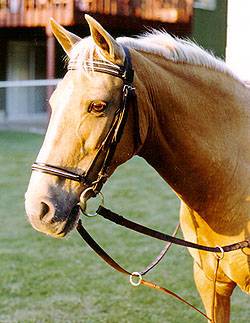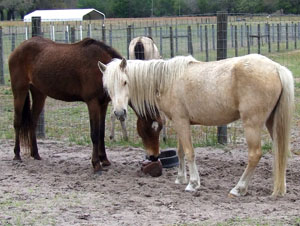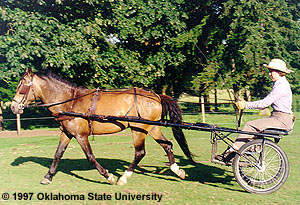Galiceño Horses
The Galiceño was introduced to the United States in 1958 making it relatively new. The Galiceño has been in the New World since the Spanish conquistadors brought horses to the continent in the early sixteenth century. The Galiceño descended from the Galician of northern Spain and the Garrano of Portugal. It was among the first sixteen horses landed by Hernando Cortes when he invaded Mexico from Cuba in 1519.
Prized for its intelligence, beauty, smooth gaits, and endurance, the Galiceño became the cherished possession of natives in the coastal regions of Mexico. Although they were in part ancestors to the mustangs, the Galiceños have never migrated north to join other equine breeds in the United States, until recent interest started the importation.
The Galiceño is usually used as a child's pony due to its small size, although the Galiceño is well able to carry a man all day in rough country.
Galiceños are extremely gentle in nature and easy to handle. With such good disposition they are an excellent family horse. From the time of the conquistadors the Galiceño has performed conceivable tasks and has accomplished each with a remarkable native intelligence. The Galiceño is bright, alert, and very quick to learn. It shows its worth to the novice and expert alike.
Although the Galiceño is small, it possesses hardness, courage, and stamina that are difficult for many larger horses to match. Its gaits are smooth and not tiring to the rider. The Galiceño makes a good cutting horse being agile and fast. It is also excellent in reining classes or timed events.
Setting it apart from pony breeds, this breed possesses substance, style beauty and a natural ground-covering running-walk. All solid colors are accepted for registration while albinos or pintos are not allowed. The head shows refinement with good width between the eyes, pointed ears, a large, lively eye, and a small muzzle; the neck is slightly arched with a clean throat latch and fits smoothly into the withers, which are prominent. The body is smoothly muscled; the back short and straight; the croup slightly sloped with a moderately high tail-set. The hind quarters are set slightly more under the body than other breeds; the joints are strong and well shaped; the shoulder is well sloped, giving a long stride; the forelegs have well muscled forearms. Open at the heel, the feet are well shaped and hard.
Registries and Associations
United States
Galiceño Horse Breeders Association
7225 US Highway 377 Collinsville, TX 76233
Email: galicenos@aol.com
References
International Encyclopedia of Horse Breeds, Bonnie L. Hendricks, 1995, University of Oklahoma Press, Norman, OK.



